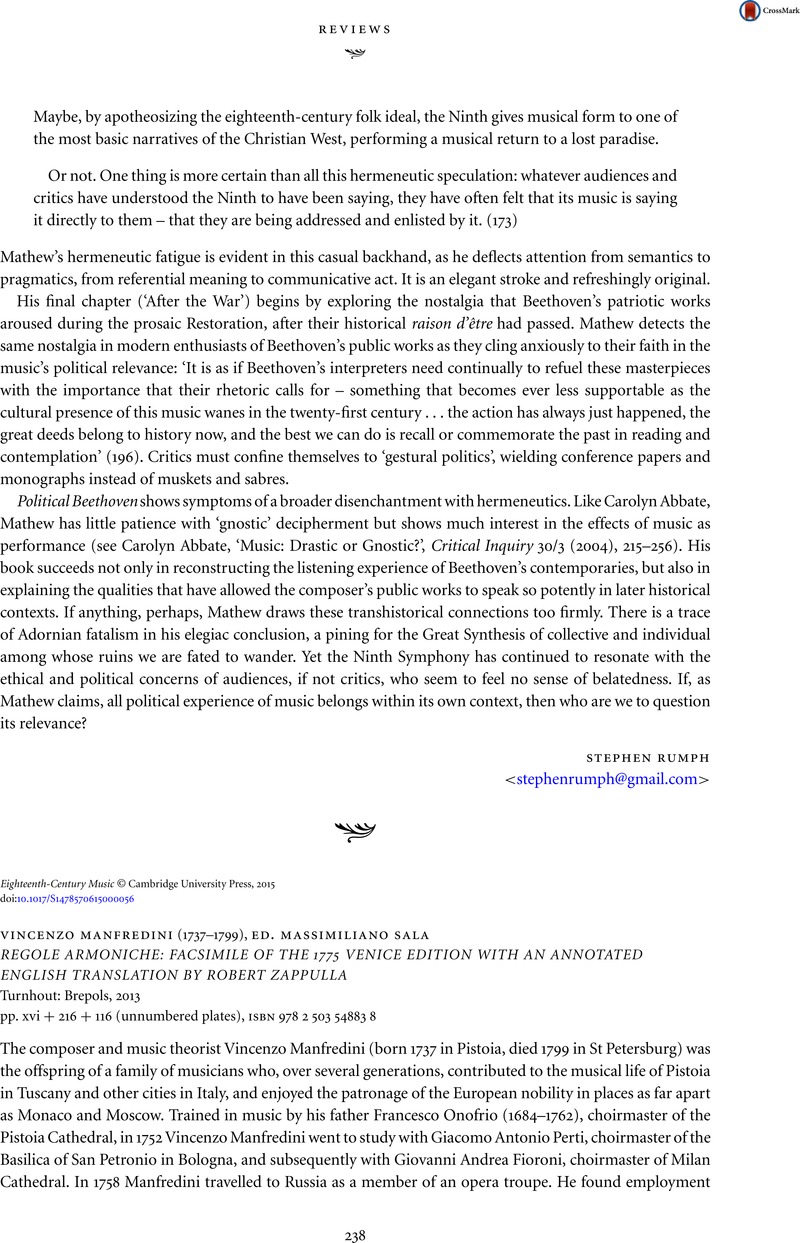No CrossRef data available.
Article contents
VINCENZO MANFREDINI (1737–1799), ED. MASSIMILIANO SALA REGOLE ARMONICHE: FACSIMILE OF THE 1775 VENICE EDITION WITH AN ANNOTATED ENGLISH TRANSLATION BY ROBERT ZAPPULLATurnhout: Brepols, 2013 pp. xvi + 216 + 116 (unnumbered plates), isbn978 2 503 54883 8
Published online by Cambridge University Press: 24 August 2015
Abstract
An abstract is not available for this content so a preview has been provided. Please use the Get access link above for information on how to access this content.

- Type
- Reviews: Books
- Information
- Copyright
- Copyright © Cambridge University Press 2015




